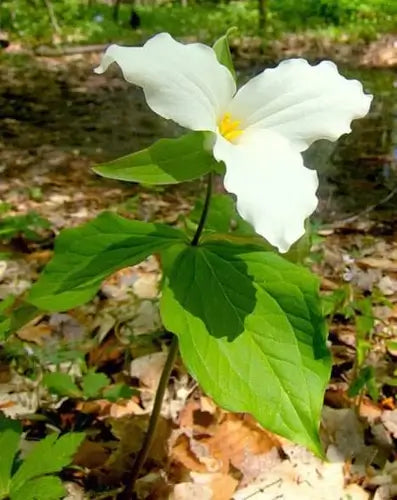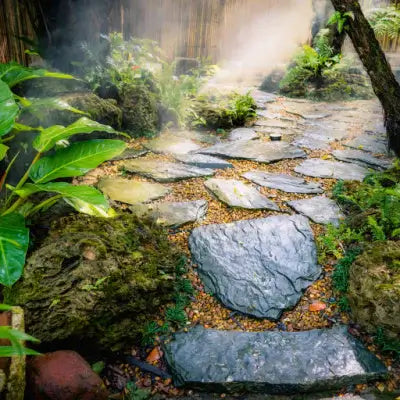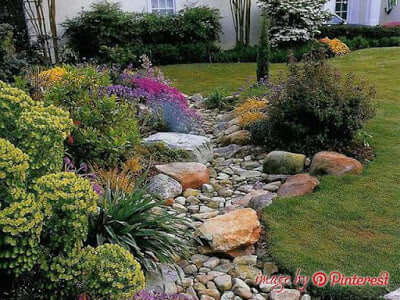Witch Hazel
The Witch Hazel is a deciduous shrub known for its spidery, fragrant yellow to orange-red flowers that bloom in late winter to early spring, often before its leaves emerge. This makes it a unique and welcome sight in gardens.
It is a versatile shrub that offers numerous landscaping benefits beyond its well-known medicinal uses. Native to North America and parts of Asia, these deciduous shrubs are prized for their unique appearance, vibrant foliage, and striking winter blooms. When incorporated into landscape designs, this plant can enhance outdoor spaces with a range of aesthetic and functional advantages.
Witch Hazel (Hamamelis) adds Interest Throughout The Year
Four-Season Interest: In late winter or early spring, the shrub bursts into bloom, displaying fragrant, spidery flowers in shades of yellow, orange, and red. This early flowering period provides a much-needed splash of color when most other plants are still dormant. Additionally, Autumn's foliage turns vibrant shades of yellow, orange, and red, creating a stunning autumnal display.
Natural Privacy Screen: This shrub, with its dense branching and arching habit, can be an effective natural privacy screen. Planted strategically along property borders or in groupings, it can shield outdoor spaces from prying eyes and create a sense of seclusion.
Pollinator-Friendly: The flowers are a valuable nectar source for early-emerging pollinators, such as bees and butterflies. By attracting these beneficial insects, this shrub contributes to the overall health and biodiversity of the landscape, promoting a balanced ecosystem.
Tolerance to Shade: It thrives in partial shade to full sun, making it an excellent option for landscapes with varying light conditions. Its adaptability allows for planting in different locations, from under the canopy of more giant trees to sunnier spots in the garden.
Erosion Control: The extensive root system helps stabilize the soil and prevent soil erosion, prevention on slopes, or areas prone to water runoff.
Witch Hazel Shrubs Are Low Maintenance
Low Maintenance: Once established, this shrub is relatively low-maintenance. It is resistant to pests and diseases and requires minimal intervention.
Wildlife Attraction: Apart from pollinators, this shrub attracts other wildlife, such as birds, which feed on the seeds and seek shelter within the shrub's branches. This feature contributes to the overall biodiversity and liveliness of the landscape.
Winter Interest: Distinctive, ribbon-like flowers appear in winter, adding a unique touch to the landscape during an otherwise less colorful season. These spidery blooms can withstand light frosts, offering an enchanting sight in colder climates.
Versatile Uses: Beyond standalone plantings, this shrub can be incorporated into mixed borders, woodland gardens, or naturalized areas. Its adaptability allows it to blend seamlessly with other plants and design elements.
In conclusion, Witch Hazel is valuable to any landscape design, offering four-season interest, privacy screening, pollinator support, erosion control, and low maintenance. Its unique beauty and ecological contributions make it a sought-after shrub for enhancing outdoor spaces. By incorporating this shrub into landscaping plans, homeowners and landscape designers can create visually appealing and ecologically friendly gardens that stand out every season.
Witch Hazel Has Bright Golden Blooms
This green-leafed shrub blooms with bright yellow flowers between October and December. The ribbon-like yellow petals usually appear after the leaves have fallen but sometimes will appear while the oval-shaped yellow autumn leaves still cling to the branches. It also has fruits that will form from fertilized flowers.
They first appear as green capsules but then turn brown over time. Its scientific name is because this shrub’s flowers, fruits, and leaves can all appear on its branches simultaneously. Hamamelis loosely translates as “together with fruit.” Its hardy nature makes it an easy-to-grow shrub. Because of this, it is trendy amongst gardeners as a shrub hedge or screen. Its fragrant flowers often lead to it being grown in an area where its pleasant scent is noticeable. It is usually the last bit of color in a garden due to its late bloom.
Witch Hazel Thrives In Most U.S. Zones
This shrub can be planted successfully in U.S.D.A. zones 3 to 9. It requires a lot of sunlight and does best in full sun or partial shade. Flowering will peak in full sun. It does well in moist, acidic soil and can handle heavy clay soil. The height increases by 13 to 24 inches yearly, giving it a slow to medium growth rate.
If preferred, pruning can be done in early spring to keep the shrub from growing too large. This plant requires little maintenance to flourish and rarely has insect or disease problems. Witch hazel has a broad, rounded leaf arranged in an alternating pattern along the branches. The flowers are also noteworthy in appearance, with slender petals.
Some bloom in spring while others counter that, and the plant can showcase its cycle between seeding and blooming, such as the snapping type with seeds that split in a manner that ejects the seeds to a sufficient distance of nearly 30 feet. The sunny yellow flowers of this shrub add a glow of happiness to yards and gardens. The delightful fragrance of those flowers creates an even more cheerful atmosphere. It is so easy to care for and an excellent fit for even the hands-off gardeners.
What facts should I know about the witch hazel trees?
Witch hazel, belonging to the Hamamelis genus, is a group of deciduous shrubs or thorny trees bearing scented flowers that bloom preferentially during late autumn or at winter time, even in areas that are cold. These species are initially from North America and Asia and grow best in soil that is well-drained and in an area that receives partial to full sun.
What are the Uses of Witch Hazel Tree?
Witch hazel trees grow in gardens with year-round appeal, fascinating flowers, excellent fall colors, and resilience. Apart from the beautiful colors, their barks and leaves possess tannins.
How quickly does witch hazel grow?
Growth of witch hazel trees is considered to be moderate and would gain between 12 and 24 inches per year in ideal circumstances. Unfavorably affected by genetics, habitat and diet, they usually attain their adulthood length of 10 to 20 feet in 10 to 15 years. Watering your plants regularly, providing the proper amount of fertilizer, and sometimes pruning will all contribute to their sustained growth.
Where does witch hazel grow best?
Witch hazel grows best in soil with good drainage and slightly acidic pH and requires partial to full sun to bloom. It is very versatile and can develop in a number of climates, such as wooded areas, gardens, and near stream margins.
































































